The Annapurna Circuit in Nepal is a 1 to -21-day hike (depending on the time you have available) that begins in the lush green villages of the Himalayan foothills and meanders over high mountain passes and down to the Mustang Valley.
Traveller and photographer Albert Retief hiked this trail with his 60-year-old father Paul Retief and shares some photos and advice from this challenging yet incredibly enjoyable journey.
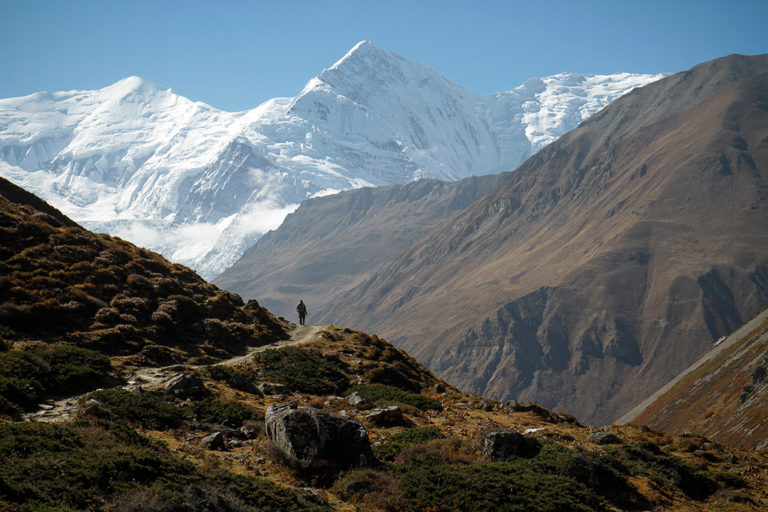
We began the walk early in the morning, heading towards Yak Kharka village where we rested for a day to acclimatize to the high altitude. The Annapurna Circuit is a horseshoe-shaped route that covers about 211km and can last anywhere from 16 to 21 days depending on your walking speed, acclimatization timeline and overall schedule. Image: Albert Retief
Only bring what you need and focus on travelling light. Food was easy to find, as was accommodation. We quickly learned to take it slow and not to underestimate the altitude. You’ll need to prepare yourself for the Thorong La Pass, as it takes hikers to 5,416m (by way of comparison, the summit of Kilimanjaro is 5,895 m) but it’s worth it when you see the Tibetan-influenced temples and communities of the Mustang Valley. The most challenging day will be crossing the pass; it will push even the fittest hiker to their limits.
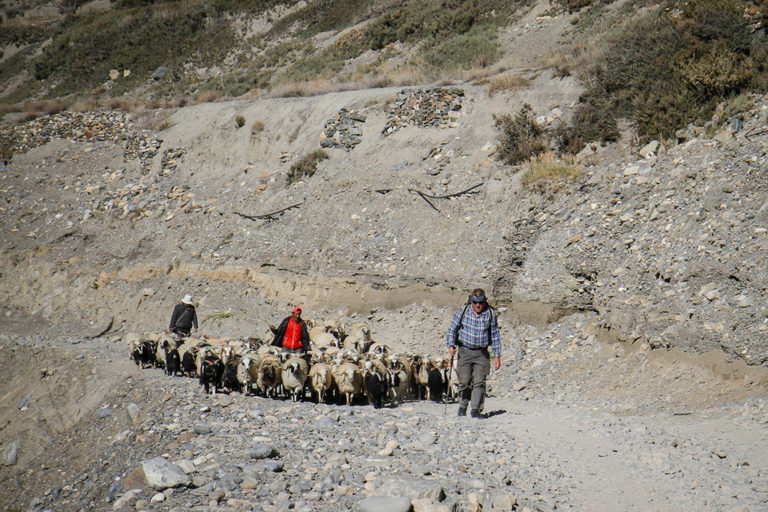
Paul Retief walks for a full day towards the town of Jomson. He covered nearly 25km on this mostly-flat route. Most days you walk for about six hours, but this day was a longer hike. Image: Albert Retief
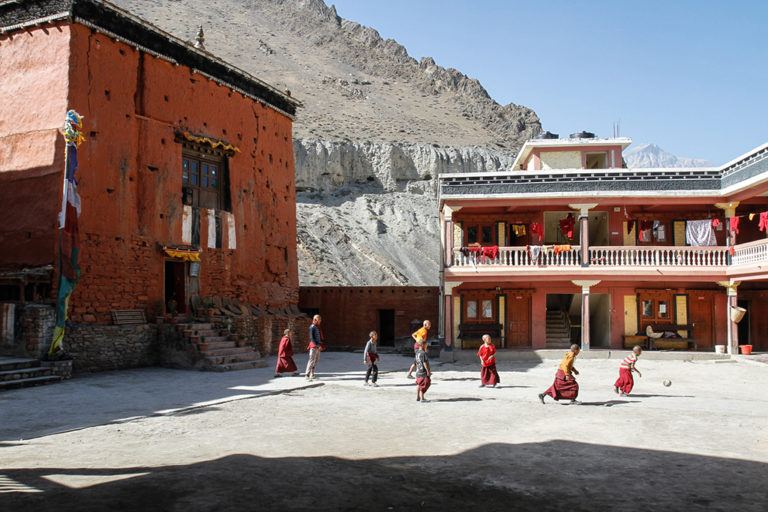
Young monks play soccer in the grounds of one of many Buddhist temples in the Mustang Valley. Buddhism is the
dominant religion in the region. Image: Albert Retief
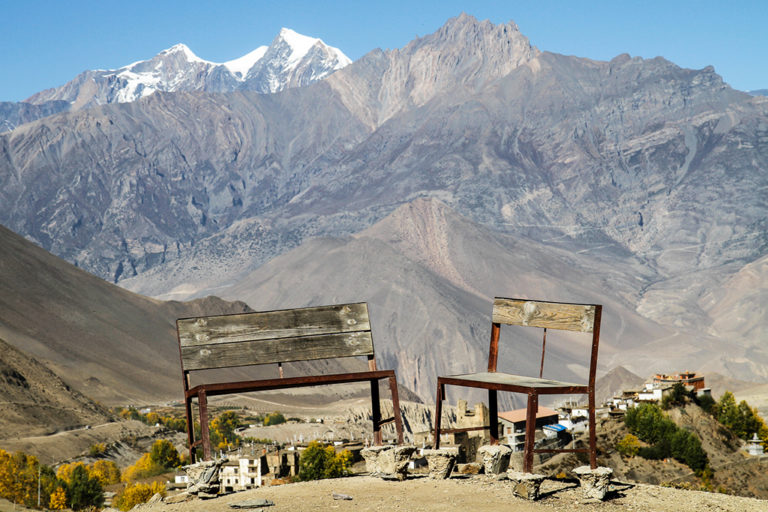
A view into the Tibetan-influenced Mustang Valley. The Hindu dominance of Nepali culture fades as you cross the Himalayas, and the Lower Mustang Valley is rich in Tibetan Buddhist culture. Image: Albert Retief
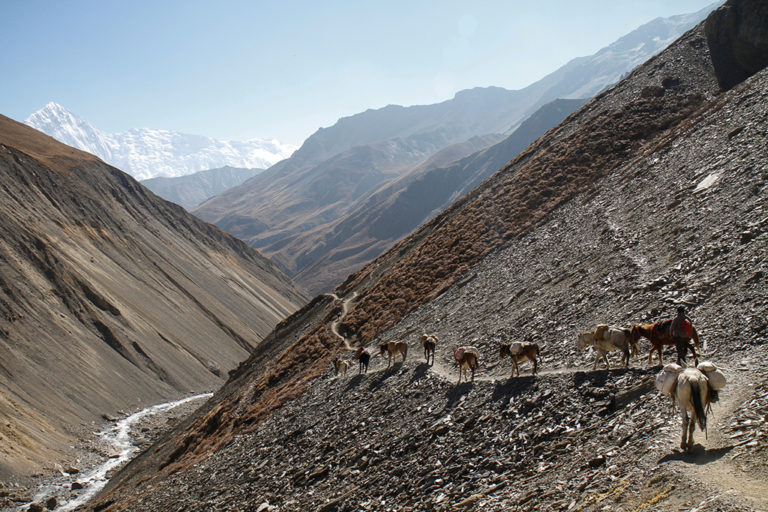
Donkeys walk down towards Yak Kharka village. The trail from Muktinath in the Mustang Valley to Manang has been used by locals for hundreds of years to transport herds of sheep and yak in and out of Manang, making this an important route. Image: Albert Retief
Also watch: Walking the Annapurna trail (video)
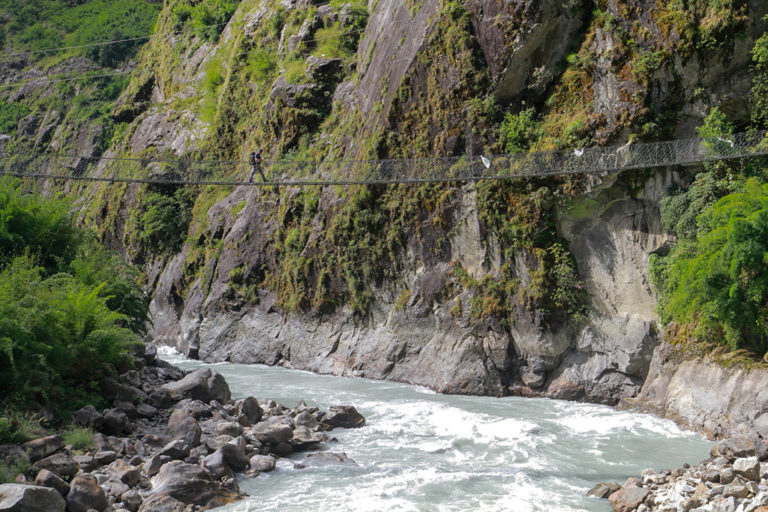
Paul Retief crosses one of several suspension bridges as he makes his way from the green foothills of the Himalayas to the village of Chame. There is a 4×4 road that can take you all the way to Manang and a large part of the circuit follows this road.
There are a number of side tracks that cross over the many suspension-bridges like this one. Image: Albert Retief
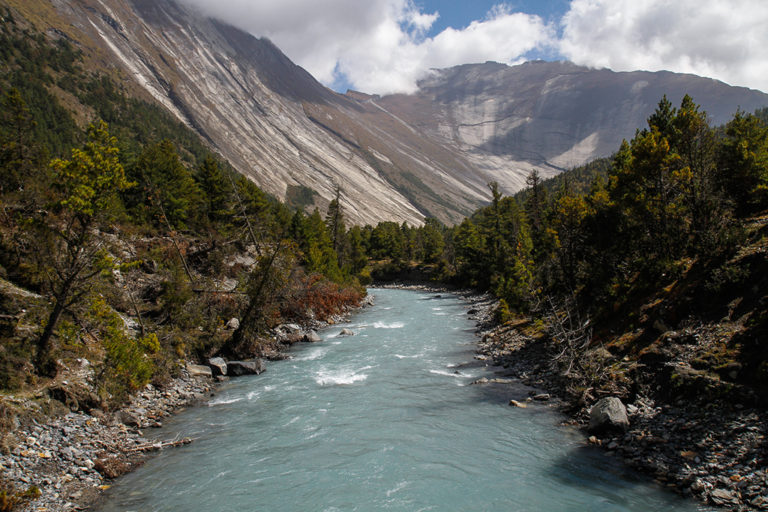
Hiking from Chame to Upper Pisang. The views constantly change as you make your way higher into the mountains. You have to purchase two permits for the circuit. The Annapurna Conservation Area Permit (ACAP) and Trekkers Information Management System (TIMS) card. These permits are required to enter the Annapurna Region and will be checked at various points. Image: Albert Retief
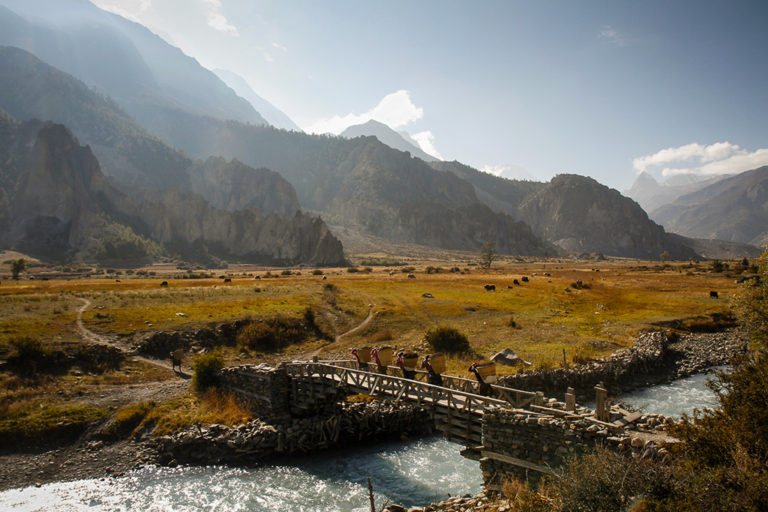
Women carrying the day’s harvest cross a bridge near Manang town. Image: Albert Retief
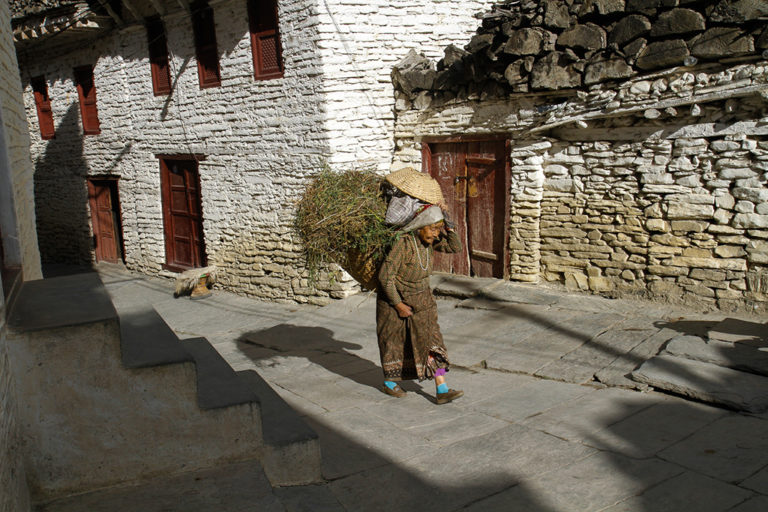
An old lady carries her daily harvest through the narrow streets of Marpha. As a home to Tibetan refugees for a long time, the Tibetan language is still spoken over cups of tea. This town is also well-known for having some of the best apples in the region and it’s easy to find delicious apple pies in this old town. Image: Albert Retief
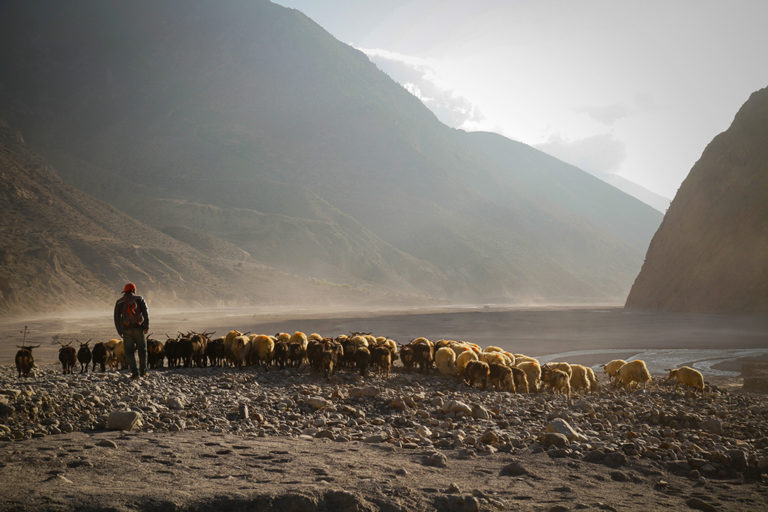
A Shepard walks with his sheep to the town of Jomson. The wind was strong and the distance far, but the terrain was flat as he followed the river. Many trekkers with a tighter schedule opt to fly from Jomson to Pokhara instead of taking the treacherous and scary bus ride down. Image: Albert Retief
Need to know
Best time of year to do the trail: April to May and October to November are the best times to do the trail. Paul and Albert did it in October.
Permits
Permits, accommodation and finalising gear can be organised in Nepal’s capital, Kathmandu. You will need both the Trekker’s Information Management System card (TIMS) and the Annapurna Conservation Area Permit (ACAP). These will be checked at various checkpoints along the trek. Each permit costs $20 USD (about R280).
Make sure to take enough cash
I was told, ‘Make sure to not run out of money as there is no way to draw money while on the circuit. It’s only once you get to Jomson that you can find an ATM, so draw enough beforehand.’ This turned out to be a vital piece of advice on the trek.
Text and images: Albert Retief
You may also like
Related Posts
Whether you’re in a two-person hiking tent eye-balling the peaks or a full caravan in...
read more
Gabrielle Jacobs forsakes the Breede Valley’s winelands for some Cape nature at Vrolijkheid Nature Reserve,15km...
read more
A new guided hike in the Western Cape known as the 16 Mile Beach Challenge...
read more